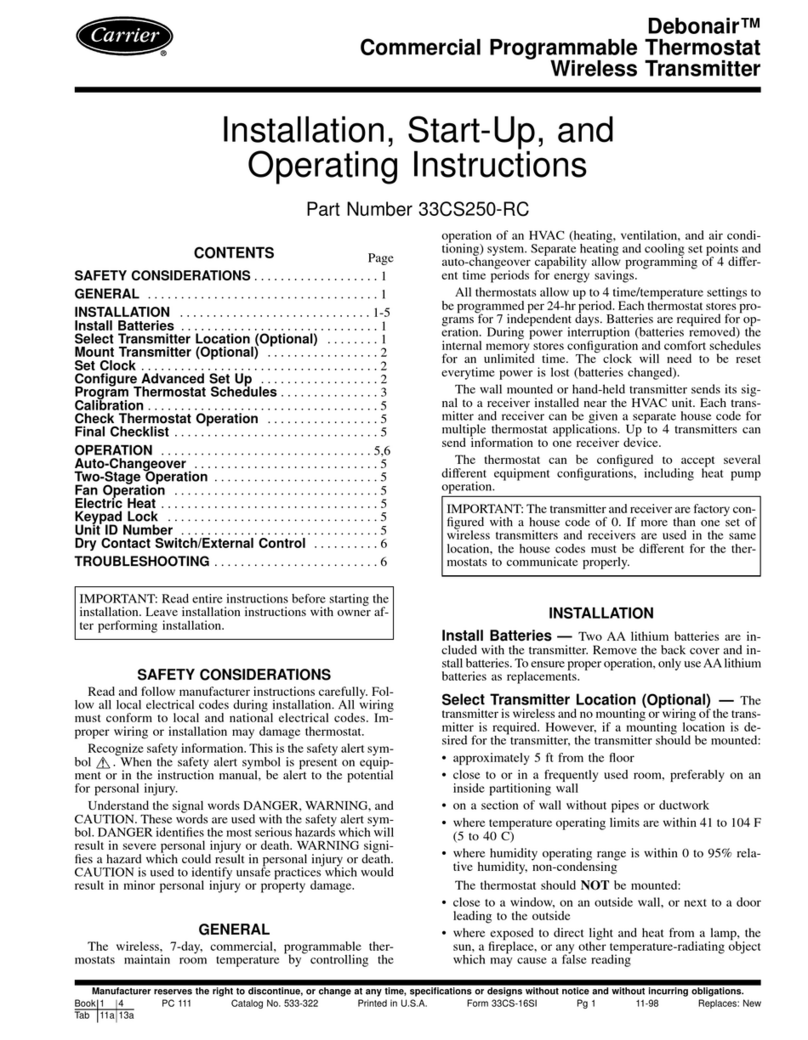
Toxic/Combustible Gas Transmitter B6
Installation and Operation
N2-B6 Series - 8/23/23
Specifications subject to change without notice.
Catalog No. 11-808-788-01 Page 10 of 16
Auto Zero:
Settings for both B6M sensor and Q6R sensor
When AutoZero is set to ON, the unit will gather the lowest reading in 7- day period and set the unit into
Zeroing Calibration mode so that the lowest reading goes to zero. When AutoZero is set to OFF, the
unit will not adjust its own zero and work off the last manual or factory calibration.
Default value is OFF.
NOTE: AutoZero works best in situations where the building will purge at night (or over a weekend) to a
zero concentration of target gas.
ON: Beeping when keypad is touched OFF: No beeping when keypad is touched
Restore Default:
Note: Don’t do this if you don’t have calibration gas and precision reference instrumentation to
calibrate the unit.
To load defaults to factory settings, to restore the unit to correct operation. The settings below will be
restored to default values:
-Password, -Baud rate, -Scroll rate, -Backlight, -Display mode, -Key beeper,
-LCD contrast, -Gas type on the Sensor Board, -Alarm settings, - Relay/Buzzer settings.
Zero and span calibrations are needed.
ADJ Clock: Adjust real time clock. The B6 supports the execution of the TimeSynchronization service and
UTCTimeSynchronization service. The clock can be adjusted remotely.
ADJ
Adjust the LCD contrast. Valid values are between 10 (light) and 50 (dark). Default is 21.
B6 Sensors:
If the smart sensor in B6M unit is not installed, it can be disabled here, so the B6 will not detect the smart sensor
board and will not report any fault on the sensor offline
If the smart sensor in Q6R is not installed, it can be disabled too.
Both default values are ON, that means both B6M and Q6R sensors are installed.
Output Priority:
Alarm output (BV) present_value and relay output (BO) present_value support command prioritization. The B6 has
priority #12 as default.
The lower the priority umber the more critical the nature of the output. Priority #1 is considered the highest priority.
Priority #16 is the lowest priority.
Menu “2_ZERO CAL”
First to select which sensor is going to be calibrated, B6M or Q6R? The subsequent zero calibration will be performed on
that sensor.
The calibration is using a two-point calibration process. First, use a “Zero Gas”, then use a “CAL Gas” containing a known
concentration of a standard reference gas, to set the second point of reference.
Equipment Required
•A cylinder of Zero Gas, (clean air or nitrogen).
•A cylinder of Cal Gas
•Flow Limiting Regulator(s) 0.2 to 1.0 lpm
•Tubing





























